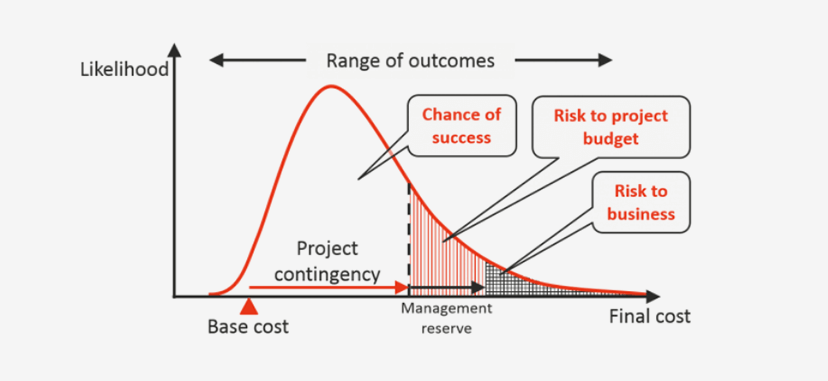Everything You Need to Know About Monte Carlo Simulation in Project Management
Table of Contents

- jaro education
- 15, October 2024
- 12:00 pm
In today’s dynamic business environment, uncertainty is a given. This is especially true in project management, where unforeseen risks, fluctuating timelines, and shifting resource needs can dramatically affect outcomes. Fortunately, Monte Carlo Analysis (MCA) provides a powerful method for quantifying uncertainty and enhancing decision-making. If you’re serious about mastering project management techniques, Monte Carlo simulation is a tool you don’t want to overlook—especially if you’re aiming to gain an Executive Certificate in Advanced Project Management and Analytics from the prestigious IIM Mumbai.
Let’s dive into what Monte Carlo Analysis is, why it matters in project management, and how it can boost your ability to lead successful projects.
What is Monte Carlo Method?
The first question that needs to be answered is, “What is Monte Carlo method in statistics?” Monte Carlo simulation technique is used to predict the probability of different outcomes when the potential for variation exists. Named after the Monte Carlo casino in Monaco (since it deals with random outcomes much like games of chance), It allows project managers to understand the impact of risk and uncertainty on project schedules, costs, and outcomes.
Instead of relying on a single estimate for a task duration or budget, Monte Carlo simulations model a range of possible outcomes based on different variables, running hundreds or even thousands of iterations. The result? A more comprehensive view of the potential risks and their impacts on your project.
How Does Monte Carlo Simulation Work?
Here’s a breakdown of the Monte Carlo simulation steps:
- Define Variables: Identify the key variables that can affect your project—such as time, cost, or resource availability.
- Determine Probability Distributions: Assign probability distributions to these variables. For example, if a task could take between 10 to 20 days, you would assign a range with probabilities (e.g., 10 days having a 30% chance, 15 days having a 50% chance, and so on).
- Run Simulations: The Monte Carlo simulation will randomly generate values for each of these variables based on their distributions and run the project model thousands of times to simulate all possible outcomes.
- Analyze Results: The output provides a probability distribution of all possible results—helping you to see how likely it is that a project will meet its deadline or budget and what the potential risks are.
- Decision Making: Armed with these insights, you can make data-driven decisions about risk mitigation, resource allocation, and contingency planning.

*SpiceWorks
Key Features of Monte Carlo Analysis
Here are some key features of Monte Carlo Analysis that make it essential for project managers:
| Feature | Description |
|---|---|
| Probabilistic Modeling | Models uncertainty by generating a range of possible outcomes. |
| Multiple Iterations | Runs thousands of simulations to produce reliable data. |
| Risk Analysis | Identifies potential risks and their impacts on project outcomes. |
| Data-Driven Decisions | Provides statistical backing for making informed decisions. |
| Visual Outputs | Generates graphs and charts for better stakeholder communication. |
Why Use Monte Carlo Simulation in Project Management?
Monte Carlo simulation isn’t just for mathematicians or risk analysts. It’s a practical tool that gives project managers critical insights to manage risks effectively. Here are a few reasons why it’s a game-changer:
- Better Risk Management: Since uncertainty is built into the process, Monte Carlo simulation helps you identify high-risk areas in your project and plan for potential delays or cost overruns.
- Improved Decision-Making: With a detailed picture of different scenarios, you can choose the most viable paths and develop mitigation strategies for risks that pose the greatest threat to project success.
- Accurate Project Forecasting: Instead of relying on rough estimates or intuition, Monte Carlo simulation provides a data-driven way to estimate timelines and costs with confidence.
- Enhanced Stakeholder Communication: When presenting to stakeholders, having statistical backing can lend credibility to your predictions and increase buy-in for decisions around scope, budget, and timelines.
Real-World Application of Monte Carlo Simulation
Imagine you’re managing a construction project, and your team has estimated the completion of each phase, from foundation to finishing. However, multiple factors such as weather, labor availability, and material delivery can affect your timeline.
| Phase | Estimated Days | Probability Distribution |
|---|---|---|
| Foundation | 10-15 | 30% chance for 10 days |
| Framing | 20-25 | 40% chance for 20 days |
| Finishing | 15-20 | 50% chance for 15 days |
Instead of using a linear approach based on estimates, you can input the range of possible outcomes for each task into a Monte Carlo simulation. By running the simulation, you generate a probability-based project completion date. This approach not only provides clarity on potential delays but also allows you to create risk mitigation strategies well in advance.

*BobStanke
The Role of Monte Carlo Simulation in Advanced Project Management and Analytics
Mastering Monte Carlo simulation is a critical skill for today’s project managers who want to excel in the increasingly data-driven world of project management. It not only boosts your ability to manage complex projects but also aligns with higher-level certifications such as the Executive Certificate Programme in Advanced Project Management and Analytics by IIM Mumbai, in collaboration with Jaro Education as the Marketing and Technology partner for the programme.
This certification emphasizes the importance of data-driven decision-making in projects. Monte Carlo simulation plays a vital role in this, as it’s a technique that merges advanced statistical knowledge with practical project management. Learning how to use Monte Carlo simulation helps you navigate uncertainty and deliver projects with higher accuracy and confidence.
Additionally, an Executive Certificate positions you as a leader in the field, demonstrating your capability to apply sophisticated analytical techniques like Monte Carlo simulation to solve real-world project challenges. As organizations continue to prioritize agility and efficiency, having the expertise to implement such advanced methodologies will make you stand out in a competitive job market.
Conclusion
Monte Carlo simulation is more than just a complex mathematical model—it’s a critical tool for anyone serious about managing projects in a world of uncertainty. By embracing the Monte Carlo Simulation technique, project managers can better predict outcomes, mitigate risks, and make more informed decisions. Whether you’re aiming for greater project success or pursuing an Executive Certificate in Advanced Project Management and Analytics, adding Monte Carlo simulation to your toolkit will set you on the path to leadership in project management.
With its ability to transform vague uncertainties into clear, actionable insights, Monte Carlo simulation isn’t just a tool for today—it’s a strategy for the future. Don’t miss the opportunity to leverage Monte Carlo simulation in your projects and unlock new levels of success!
Frequently Asked Questions
The Monte Carlo simulation is used to understand the impact of risk and uncertainty in various fields, including project management, finance, engineering, and science. Specifically, it is employed for:
-
- Risk Assessment: Evaluating the likelihood of different outcomes and identifying potential risks in project timelines, costs, and resource availability.
- Decision Support: Providing a data-driven basis for making informed decisions by simulating various scenarios and analyzing their outcomes.
- Forecasting: Predicting future events by analyzing historical data and generating a range of potential outcomes, which can be especially useful in budget forecasting and project scheduling.
- Optimization: Finding optimal solutions by examining different variable combinations and their effects on project outcomes.
- Sensitivity Analysis: Understanding which variables have the most significant impact on project success and how changes in those variables affect results.
No, the Monte Carlo simulation is not considered artificial intelligence (AI). It is a statistical technique that relies on random sampling and probability distributions to model uncertainty and predict outcomes. While it may be used in conjunction with AI methods—such as machine learning algorithms to analyze data patterns—Monte Carlo simulation itself does not involve learning from data or making decisions autonomously like AI systems do. Instead, it is a computational algorithm that performs a series of simulations to provide insights into potential risks and outcomes based on predefined inputs and assumptions.
A common example of a Monte Carlo simulation in real life can be found in the field of finance, specifically in portfolio management. Here’s how it works:
-
- Investment Portfolio Analysis: A financial analyst wants to assess the risk and potential return of a diversified investment portfolio. They consider several factors, including stock prices, interest rates, and economic indicators.
- Defining Variables: The analyst defines key variables such as expected returns, volatility, and correlations between asset classes.
- Running Simulations: Using Monte Carlo simulation, the analyst runs thousands of simulations to generate a range of possible future portfolio values over a specific time horizon (e.g., 10 years).
- Analyzing Outcomes: The results provide a distribution of potential portfolio values, showing the probability of achieving various returns. This helps the analyst understand the likelihood of different outcomes, identify risks, and make informed investment decisions.
This example illustrates how Monte Carlo simulation helps individuals and organizations navigate uncertainty and make strategic choices based on statistical evidence.









